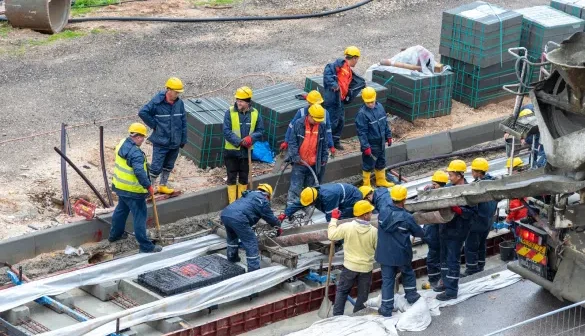1. Introduction
Asbestos, once celebrated for its durability and fire resistance, became a silent killer in workplaces across the globe. For decades, industries utilized asbestos in construction, shipbuilding, and manufacturing, often ignoring or concealing its lethal health risks. The turning point in unveiling the dangers of asbestos came not from corporate disclosures but from the courageous testimonies of workers who suffered firsthand.hofmannlawfirm.com
These personal accounts illuminated the devastating health consequences of asbestos exposure, such as mesothelioma, asbestosis, and lung cancer. Workers’ stories, ranging from carpenters to teachers, provided compelling evidence that challenged corporate narratives and prompted public awareness. Their voices became instrumental in driving regulatory changes and holding negligent companies accountable.pleuralmesothelioma.com
This article delves into the pivotal role worker testimonies played in exposing asbestos health risks. We will explore the historical context, highlight key revelations from reports, examine the involvement of top vendors, and discuss strategic takeaways for stakeholders. Understanding this journey underscores the importance of vigilance, transparency, and advocacy in occupational health.
2. Background & Context
Asbestos, a group of naturally occurring fibrous minerals, was extensively used throughout the 20th century for its insulating and fire-retardant properties. Industries incorporated asbestos into various products, including insulation, roofing materials, and automotive parts. However, the very fibers that made asbestos valuable also posed severe health risks when inhaled, leading to diseases like mesothelioma and asbestosis.pleuralmesothelioma.com
Despite emerging scientific evidence in the mid-20th century linking asbestos to serious health conditions, many companies continued its use, often downplaying or concealing the associated dangers. Workers, unaware of the risks, were routinely exposed without adequate protective measures. Over time, as affected individuals began to suffer and die from asbestos-related illnesses, their testimonies became crucial in shedding light on the hazardous nature of asbestos.
These personal accounts not only highlighted the human toll of asbestos exposure but also revealed systemic negligence and corporate malfeasance. The accumulation of such testimonies galvanized public opinion, leading to increased regulatory scrutiny and, eventually, bans on asbestos use in many countries. The courage of these workers in sharing their experiences played an indispensable role in transforming asbestos from a ubiquitous industrial material to a recognized health hazard.theguardian.com
3. Key Highlights from the Report
Worker testimonies have been instrumental in uncovering the true extent of asbestos-related health risks. Several high-profile cases exemplify how these personal narratives brought attention to the issue:
- Darryl Brooks: A former environmental health officer in Queensland, Australia, Brooks sued five councils, alleging that his mesothelioma diagnosis resulted from asbestos exposure during his employment. His case underscores the risks faced by public sector workers and the alleged negligence of governmental bodies in ensuring workplace safety. asbestos.com+3couriermail.com.au+3theguardian.com+3
- Tony Dulwich: An apprentice carpenter in the 1970s, Dulwich worked with asbestos-laden materials, unaware of the dangers. Decades later, he developed mesothelioma. Investigations revealed that Cape, a major asbestos manufacturer, had knowledge of the health risks but actively suppressed this information to protect their interests. thetimes.co.ukwilliamstriallawyers.com+5theguardian.com+5asbestos.com+5
- Janice Allen: A former Marks & Spencer employee, Allen was diagnosed with mesothelioma after years of exposure to asbestos in the company’s stores. Her case highlighted the presence of asbestos in retail environments and led to significant legal repercussions for the company. theguardian.com
- Elizabeth Belt: A primary school teacher in the UK, Belt died from mesothelioma after decades of exposure to asbestos-containing materials in classrooms. Her story brought attention to the dangers present in educational institutions and the need for thorough asbestos abatement in public buildings. theguardian.com
These cases, among many others, illustrate the pervasive nature of asbestos exposure across various professions and the critical role of worker testimonies in bringing these issues to light. Their stories have not only led to personal justice but have also driven broader societal and regulatory changes, emphasizing the importance of listening to and acting upon the experiences of those directly affected.
4. Deep Dive on Top Vendors
Several companies have been at the center of asbestos-related controversies, with worker testimonies playing a pivotal role in exposing their practices:
- Cape plc: Once a leading asbestos manufacturer in the UK, Cape faced numerous lawsuits after it was revealed that the company had knowledge of asbestos’s health risks but failed to inform workers or the public. Documents uncovered during legal proceedings showed deliberate efforts to downplay dangers and avoid regulatory scrutiny. thetimes.co.uk
- James Hardie Industries: An Australian company, James Hardie produced asbestos-containing products for decades. Worker testimonies and subsequent legal actions revealed that the company had been aware of the health hazards but continued production. The company eventually established a compensation fund for victims, but not without significant public and legal pressure. heraldsun.com.au
- Marks & Spencer: The British retailer faced legal challenges after employees, like Janice Allen, developed mesothelioma due to asbestos exposure in stores. Investigations revealed lapses in safety protocols and inadequate measures to protect staff during maintenance and renovations. williamstriallawyers.com+7theguardian.com+7gorilaw.com+7couriermail.com.au
These companies’ experiences underscore the importance of corporate transparency and responsibility. The revelations, often brought to light through the courage of affected workers, have led to significant legal and financial consequences, as well as lasting reputational damage
5. Strategic Takeaways for Buyers
The exposure of asbestos-related health risks through worker testimonies holds critical lessons for today’s consumers, businesses, and regulatory bodies.
For building owners and employers, the first strategic takeaway is the necessity of comprehensive asbestos audits—especially in older structures. Purchasing, renovating, or operating buildings without understanding their asbestos history can result in legal liability and health hazards. Regular inspections and prompt remediation by licensed professionals are non-negotiables.
For procurement officers, vendor transparency is key. Buyers must prioritize sourcing from manufacturers and suppliers that disclose detailed information about product composition. Asking for Material Safety Data Sheets (MSDS) and third-party certifications ensures materials are asbestos-free. If a supplier has a history of asbestos litigation (e.g., Cape plc, James Hardie), buyers should exercise added caution or avoid them entirely.
For legal and compliance departments, it’s essential to stay updated on national and international asbestos regulations. In the U.S., the EPA maintains strict guidelines under the Asbestos Hazard Emergency Response Act (AHERA) (EPA.gov). Buyers should ensure that any procurement, especially involving imported goods, aligns with these standards.
Ultimately, ethical sourcing isn’t just about cost and availability—it includes health and environmental safety. Worker testimonies have proven that what’s hidden in supply chains can become catastrophic later. Listening to these voices is vital in shaping responsible purchasing decisions.
6. Future Outlook or Market Trends
The role of worker testimonies in asbestos exposure cases has reshaped how industries and regulators view occupational health. Going forward, several key trends are emerging:
1. Enhanced Whistleblower Protections:
Governments worldwide are expanding protections for workers who expose unsafe practices. In the U.S., OSHA’s Whistleblower Protection Program ensures that employees can report safety violations—including asbestos hazards—without fear of retaliation (OSHA.gov).
2. AI and Tech-Driven Safety Monitoring:
Emerging technologies like AI-powered sensors and drones are being employed to detect asbestos in buildings and monitor air quality in real-time. Companies leveraging these innovations are likely to lead the shift toward proactive workplace safety.
3. Global Shift Toward Total Asbestos Bans:
While many countries have partially banned asbestos, advocacy and testimony-driven awareness are pushing governments toward full bans. In 2023, Canada implemented new rules tightening restrictions on asbestos waste disposal (Canada.ca).
4. Litigation-Driven Market Behavior:
As lawsuits continue to surface, investors are applying pressure on companies with asbestos liabilities to settle claims and remove risky materials from operations. ESG (Environmental, Social, Governance) investors now screen for past asbestos involvement as part of their due diligence.
Worker voices—once marginalized—are shaping policy, innovation, and ethical business behavior. Future markets will reward transparency, while companies ignoring history will face intensified scrutiny and penalties.
7. Conclusion + Call to Action
The testimonies of workers who faced asbestos exposure are more than stories of pain—they are powerful instruments of change. These individuals brought long-suppressed truths to light, compelling industries to admit culpability and governments to impose life-saving regulations.
Their courage has made it safer for today’s and tomorrow’s workers, but the battle isn’t over. Asbestos still lingers in older infrastructures, imports, and supply chains. Vigilance, education, and responsible procurement are essential to protect future generations.
If you are a building owner, employer, or supplier, take action now. Conduct asbestos audits, demand safety disclosures, and listen to those with lived experiences. Let history guide you toward better decisions.
For more insights, or if you believe your organization may be at risk, consult a licensed environmental safety expert or asbestos litigation attorney. Protect lives before another story is told too late.
🔗 Learn more at Asbestos.com, EPA.gov, and OSHA.gov.



